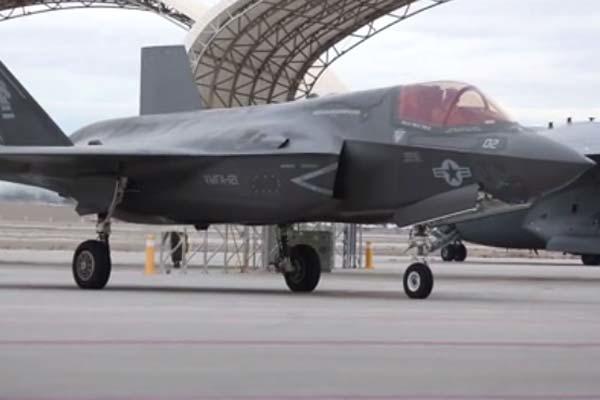The Marine Corps' first operational F-35B Joint Strike Fighter squadron is en route to Japan, where it will prepare for a wide-ranging deployment in the Pacific.
Marine Fighter Attack Squadron 121 departed its former headquarters at Marine Corps Air Station Yuma, Arizona, on Monday en route to its new base at MCAS Iwakuni, Japan, officials with 3rd Marine Aircraft Wing announced Tuesday.
VMFA-121 received its first F-35B in November 2012, well ahead of the Marine Corps' announcement of initial operational capability for the program in July 2015. For the squadron, the F-35 replaces the F/A-18 Hornet. Ultimately, the service plans to replace all its Hornets, AV-8B Harriers and EA-6B Prowlers with Joint Strike Fighters.
"The Short Take-off Vertical Landing (STOVL) aircraft is a true force multiplier," Capt. Kurt Stahl, a spokesman for 3rd MAW, said in Tuesday's announcement. "The unique combination of stealth, cutting-edge radar and sensor technology, and electronic warfare systems bring all of the access and lethality capabilities of a fifth-generation fighter, a modern bomber, and an adverse-weather, all-threat environment air support platform."
Ahead of the move forward to Japan, VMFA-121 has participated in a number of exercises and proof-of-concept evolutions to assure its readiness for the new mission.
The squadron participated in Exercise Steel Knight over the Western U.S. and California coast in December 2015, conducting the F-35's first expeditionary test as it landed at an austere airfield at Marine Corps Air-Ground Combat Center Twentynine Palms, California, and another landing pad at Red Beach.
More recently, the aircraft participated in the third and final shipboard developmental test evolution for the F-35 in October 2016, executing a proof of concept demonstration that tested the "envelope" of the conditions the F-35B could handle and flying with a range of weapons loadouts and the latest version of aircraft software, Block 3F.
"The final test period ensured the plane could operate in the most extreme at-sea conditions, with a range of weapons loadouts and with the newest software variant," Stahl said. "Data and lessons learned laid the groundwork for developing the concepts of operations for F-35B deployments aboard U.S. Navy amphibious carriers, the first two of which will take place in 2018."
The permanent move forward to Japan for VMFA-121 lays the groundwork for a series of upcoming deployments, beginning with the squadron's own deployment in the Pacific theater aboard the USS Wasp.
A second deployment the same year will see the Corps' second operational F-35 squadron, VMFA-211 aboard the USS Essex -- a pump that will likely see the aircraft's first operations in the Middle East.
-- Hope Hodge Seck can be reached at hope.seck@military.com. Follow her on Twitter at@HopeSeck.
Related Video:


























